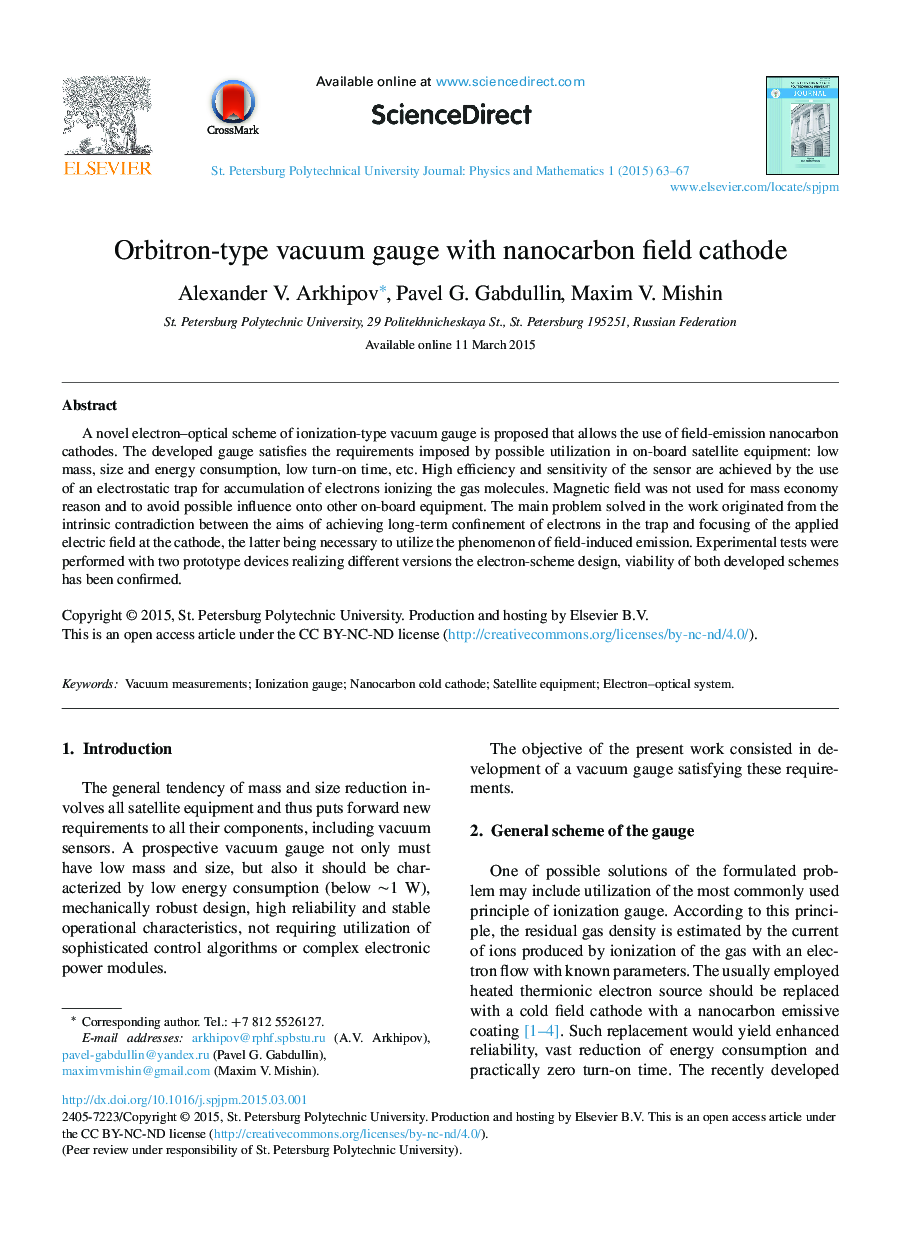| Article ID | Journal | Published Year | Pages | File Type |
|---|---|---|---|---|
| 1785309 | St. Petersburg Polytechnical University Journal: Physics and Mathematics | 2015 | 5 Pages |
A novel electron–optical scheme of ionization-type vacuum gauge is proposed that allows the use of field-emission nanocarbon cathodes. The developed gauge satisfies the requirements imposed by possible utilization in on-board satellite equipment: low mass, size and energy consumption, low turn-on time, etc. High efficiency and sensitivity of the sensor are achieved by the use of an electrostatic trap for accumulation of electrons ionizing the gas molecules. Magnetic field was not used for mass economy reason and to avoid possible influence onto other on-board equipment. The main problem solved in the work originated from the intrinsic contradiction between the aims of achieving long-term confinement of electrons in the trap and focusing of the applied electric field at the cathode, the latter being necessary to utilize the phenomenon of field-induced emission. Experimental tests were performed with two prototype devices realizing different versions the electron-scheme design, viability of both developed schemes has been confirmed.
